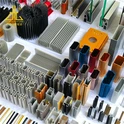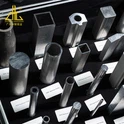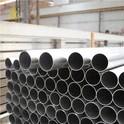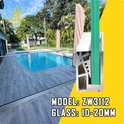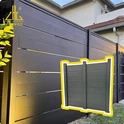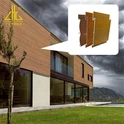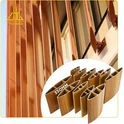The difference between "theading strip" VS "injecting type" thermal break aluminum profiles
"theading strip" VS "injecting type" process comparison
(1) The strip-type heat-insulating aluminum profile generally has three steps of separating the teeth, wearing the strips and rolling.
Toothing: The part of the aluminum profile that is to be worn with the heat insulation strip is rolled out of the teeth by a device with a hard roller gear. The purpose is to increase the roughness of the profile by hobbing to increase the shear force of the combined profile. Since the profile is divided into two parts, internal and external, according to the needs of production, the number of teething equipment is generally two.
Thread the strip: the heat-insulating strip is put on the profile, and the inner and outer sections are connected to prepare for the next rolling. One device is all right.
Rolling: This process is divided into three steps: guiding and pre-clamping, main clamping, straightening (horizontal direction, vertical direction), which is the key to ensure the tightness and verticality of the finished profile.
(2) The "injecting type" is to make the surface-treated aluminum profile move linearly through the walking system, so that when the heat-insulating groove of the aluminum profile passes under the pouring head of the casting machine, the liquid heat-insulating material flows into the heat-insulating groove. After a period of solidification, the bridge is cut.
"theading strip" VS "injecting type" insulation comparison
(1) The insulation material of the “striping process” is a heat insulation strip. The current heat insulation strip is polyamide 66 (Polyamide 66, commonly known as nylon 66). It can be produced in two ways: hard top method and traction method. . The hard top method has a tight structure and a good appearance but is relatively "brittle". The toughness produced by the traction method is good but the appearance is poor, and the side has a process depression. In order to pursue the appearance and precision of the surface, the use of PA66 nylon plus ultra-fine glass fiber is a common feature of foreign insulation strips (very few other materials are used). Due to the use of ultra-fine glass fibers, the difference in tensile strength is only 60 N/mm and it is expensive.
(2) The current insulating material of the "injecting type" is mainly composed of polyurethane heat insulating adhesive, and its composition is generally composed of a resin component and an isocyanate component.


